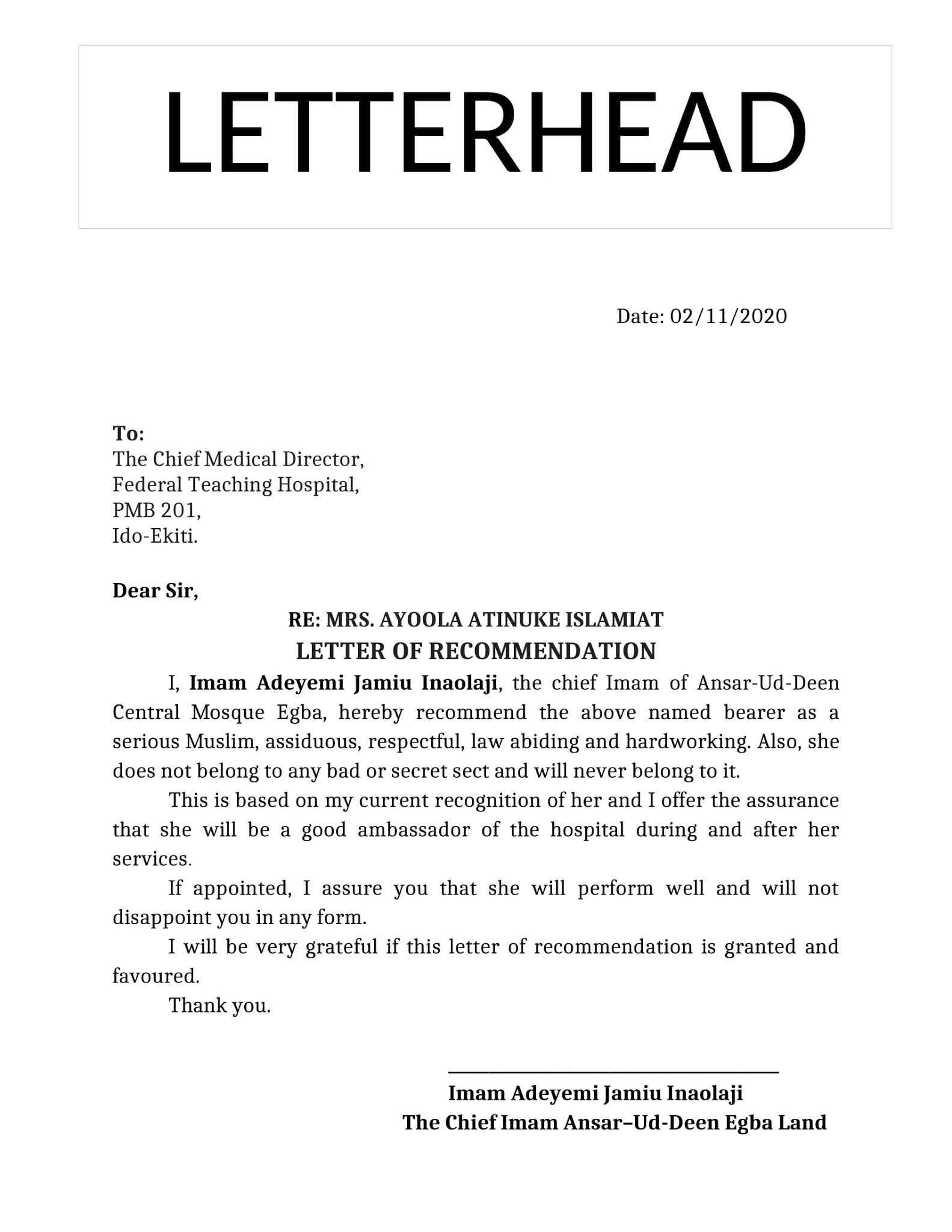An attestation letter serves as a vital document in various contexts, ranging from legal processes to personal verification. This type of letter functions as a formal declaration or confirmation of certain facts or events, often required in professional settings. In this comprehensive guide, we will explore what an attestation letter is, its significance, and provide detailed examples to help you draft one effectively.
In today's world, where documentation plays a crucial role in both personal and professional arenas, understanding how to create an effective attestation letter is essential. Whether you're a business owner needing to confirm employment status or an individual needing to validate your identity for a loan application, knowing the structure and key components of an attestation letter can streamline your process. This article will delve into various aspects of attestation letters, including their definitions, purposes, and best practices for writing one.
By the end of this article, you will have a clear understanding of how to write an attestation letter that meets the necessary requirements and adheres to formal standards. We will also provide a sample attestation letter and tips on customizing it for your specific needs. So, let's get started!
Table of Contents
- 1. What is an Attestation Letter?
- 2. Importance of an Attestation Letter
- 3. Structure of an Attestation Letter
- 4. Examples of Attestation Letters
- 5. Customizing Your Attestation Letter
- 6. Common Uses of Attestation Letters
- 7. Tips for Writing an Effective Attestation Letter
- 8. Conclusion
1. What is an Attestation Letter?
An attestation letter is a formal document that certifies the truthfulness of a certain fact or event. It is typically written by a third party who has firsthand knowledge of the situation being attested to. The purpose of such a letter is to provide verification that can be relied upon in various situations, such as legal matters, job applications, or educational admissions.
Definition in Legal Context
In legal terms, an attestation letter often serves as a sworn statement to validate specific information. For instance, a witness might provide an attestation letter confirming their presence at an event or their knowledge of an agreement.
Definition in Employment Context
In the employment context, an attestation letter can affirm a person's employment status, job title, and duration of employment. This is often required for loan applications, visa processes, or background checks.
2. Importance of an Attestation Letter
Understanding the importance of an attestation letter is crucial for anyone needing to validate information formally. Here are some key reasons why these letters are significant:
- They provide a legal safeguard by confirming facts.
- They enhance credibility by involving a third party.
- They are often required by institutions for verification purposes.
- They can expedite processes, such as applying for loans or visas.
3. Structure of an Attestation Letter
The structure of an attestation letter is essential for ensuring it serves its intended purpose. Here’s a basic outline of what to include:
- Header: Your name, address, and date.
- Recipient Information: Name and address of the person or organization receiving the letter.
- Subject Line: A clear subject line indicating the purpose of the letter.
- Salutation: A formal greeting.
- Body: Detailed information regarding the attestation.
- Conclusion: A summary and your signature.
4. Examples of Attestation Letters
Here are a couple of examples of different types of attestation letters:
Example 1: Employment Attestation Letter
[Your Name]
[Your Address]
[City, State, Zip Code]
[Email Address]
[Phone Number]
[Date]
[Recipient Name]
[Recipient Address]
[City, State, Zip Code]
Subject: Employment Attestation for [Employee Name]
Dear [Recipient Name],
I am writing to confirm that [Employee Name] has been employed at [Company Name] since [Start Date] in the position of [Job Title]. During this time, [he/she/they] has demonstrated exceptional skills and a strong work ethic.
Should you require any further information, please feel free to contact me at [Your Phone Number] or [Your Email Address].
Sincerely,
[Your Signature]
[Your Printed Name]
[Your Job Title]
[Company Name]
Example 2: Identity Attestation Letter
[Your Name]
[Your Address]
[City, State, Zip Code]
[Email Address]
[Phone Number]
[Date]
[Recipient Name]
[Recipient Address]
[City, State, Zip Code]
Subject: Identity Attestation for [Your Name]
Dear [Recipient Name],
I, [Your Name], hereby attest that I am the same person as stated in my official documents and identification. This letter serves to confirm my identity for [specific purpose, e.g., loan application, visa application].
If you need additional information, please do not hesitate to contact me.
Sincerely,
[Your Signature]
[Your Printed Name]
5. Customizing Your Attestation Letter
When customizing your attestation letter, consider the following:
- Tailor the content: Ensure the details match the specific situation.
- Use formal language: Maintain professionalism throughout the letter.
- Proofread: Check for any grammatical or typographical errors before sending.
6. Common Uses of Attestation Letters
Attestation letters are widely used in various contexts, including:
- Job Applications: To confirm employment history.
- Legal Proceedings: To provide evidence regarding a case.
- Educational Institutions: To validate student status or achievements.
- Financial Institutions: To support loan applications.
7. Tips for Writing an Effective Attestation Letter
Here are some helpful tips to ensure your attestation letter is effective:
- Be clear and concise in your writing.
- Provide accurate and truthful information.
- Keep the tone formal and respectful.
- Include your contact information for any follow-ups.
8. Conclusion
In summary, an attestation letter is an essential document that verifies specific facts or events. By understanding its structure, significance, and how to customize it for various purposes, you can create an effective letter that meets your needs. We encourage you to practice writing your own attestation letter and refer back to this guide as needed.
If you found this article useful, please leave a comment below, share it with your friends, or check out our other articles for more insights!
Thank you for reading, and we hope to see you again soon!


